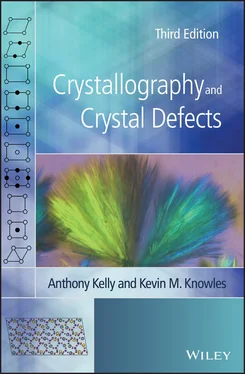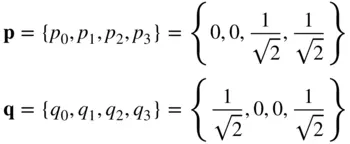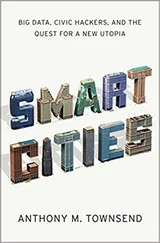Anthony Kelly - Crystallography and Crystal Defects
Здесь есть возможность читать онлайн «Anthony Kelly - Crystallography and Crystal Defects» — ознакомительный отрывок электронной книги совершенно бесплатно, а после прочтения отрывка купить полную версию. В некоторых случаях можно слушать аудио, скачать через торрент в формате fb2 и присутствует краткое содержание. Жанр: unrecognised, на английском языке. Описание произведения, (предисловие) а так же отзывы посетителей доступны на портале библиотеки ЛибКат.
- Название:Crystallography and Crystal Defects
- Автор:
- Жанр:
- Год:неизвестен
- ISBN:нет данных
- Рейтинг книги:3 / 5. Голосов: 1
-
Избранное:Добавить в избранное
- Отзывы:
-
Ваша оценка:
Crystallography and Crystal Defects: краткое содержание, описание и аннотация
Предлагаем к чтению аннотацию, описание, краткое содержание или предисловие (зависит от того, что написал сам автор книги «Crystallography and Crystal Defects»). Если вы не нашли необходимую информацию о книге — напишите в комментариях, мы постараемся отыскать её.
explains the modern concepts of crystallography in a clear, succinct manner and shows how to apply these concepts in the analyses of point, line and planar defects in crystalline materials.
Fully revised and updated, this book now includes:
Original source references to key crystallographic terms familiar to materials scientists Expanded discussion on the elasticity of cubic materials New content on texture that contains more detail on Euler angles, orientation distribution functions and an expanded discussion on examples of textures in engineering materials Additional content on dislocations in materials of symmetry lower than cubic An expanded discussion of twinning which includes the description and classification of growth twins The inclusion and explanation of results from atomistic modelling of twin boundaries Problem sets with new questions, detailed worked solutions, supplementary lecture material and online computer programs for crystallographic calculations. Written by authors with extensive lecturing experience at undergraduate level,
continues to take its place as the core text on the topic and provides the essential resource for students and researchers in metallurgy, materials science, physics, chemistry, electrical, civil and mechanical engineering.





 γ ≥ 0, because from Table 1.1permitted values of γ are 60°, 90°, 120° and 180°, it follows that there are no solutions for n Aand n Bin Eq. (1.41)for Statement (1.33)to be valid. Therefore, we have shown that a sixfold axis and a fourfold axis cannot be combined together in a crystal to produce a rotation equivalent to a single sixfold, fourfold, threefold or twofold axis.
γ ≥ 0, because from Table 1.1permitted values of γ are 60°, 90°, 120° and 180°, it follows that there are no solutions for n Aand n Bin Eq. (1.41)for Statement (1.33)to be valid. Therefore, we have shown that a sixfold axis and a fourfold axis cannot be combined together in a crystal to produce a rotation equivalent to a single sixfold, fourfold, threefold or twofold axis. = 54.74°, cos −1
= 54.74°, cos −1  = 35.26°, and cos −1(1/3) = 70.53°. The sets of related rotations shown in Table 1.2can always be designated by three numbers, such as 222, 233, or 234, each number indicating the appropriate rotational axis.
= 35.26°, and cos −1(1/3) = 70.53°. The sets of related rotations shown in Table 1.2can always be designated by three numbers, such as 222, 233, or 234, each number indicating the appropriate rotational axis.












